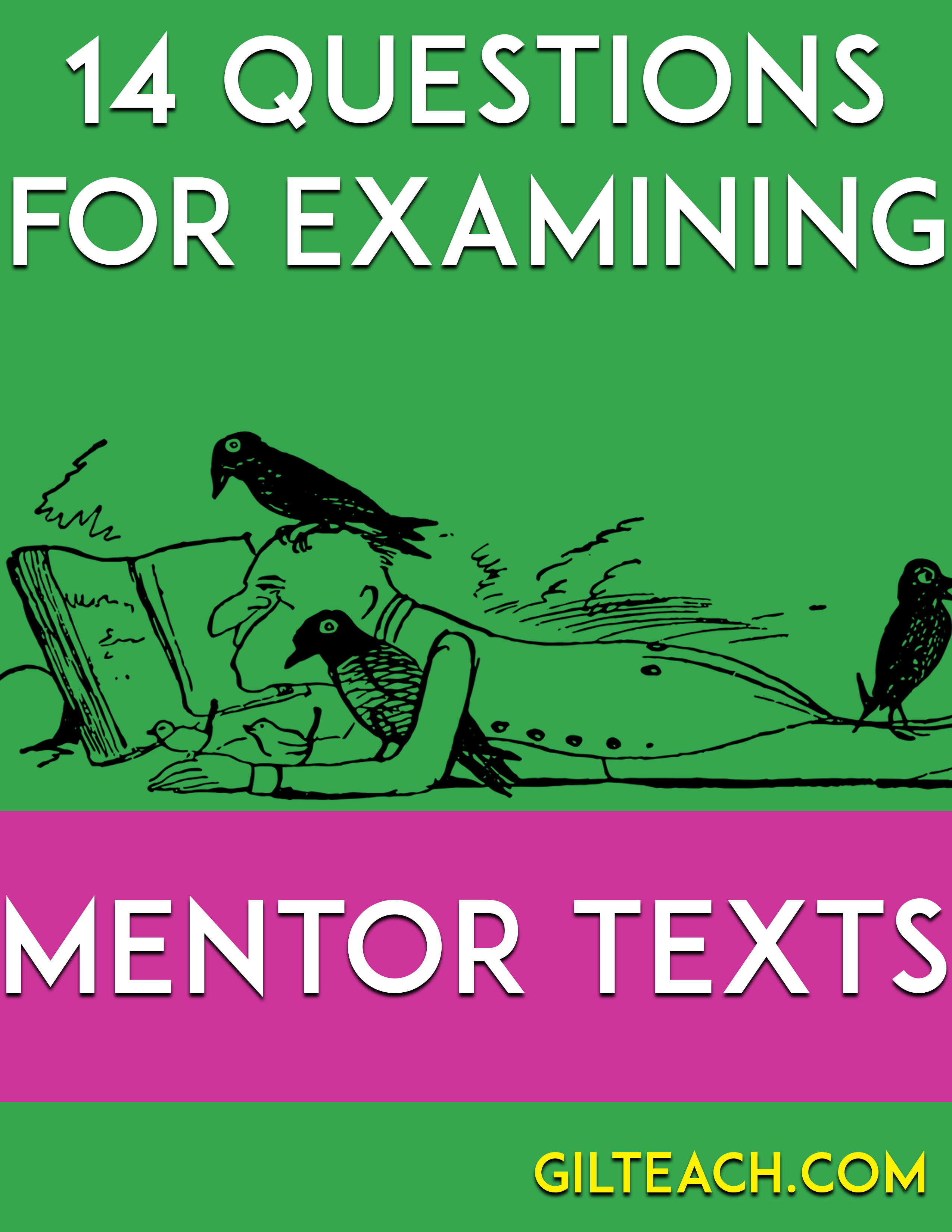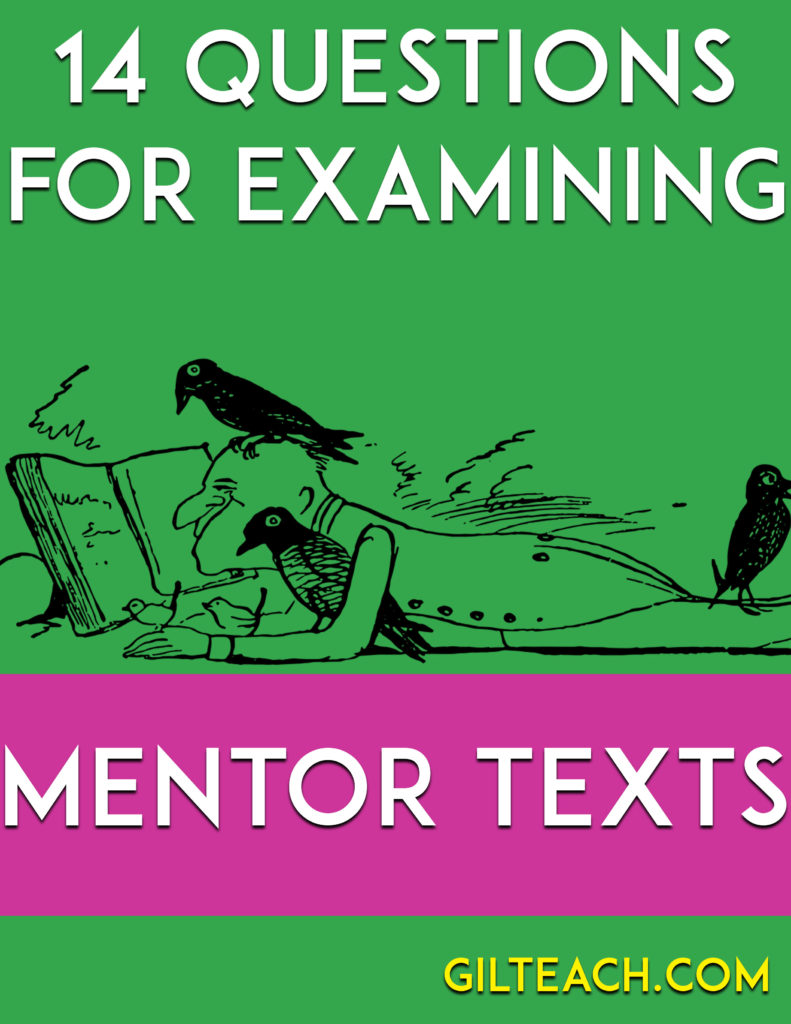14 Questions for Examining Mentor Texts (Of Any Kind)

Once students are comfortable reading and analyzing mentor texts in order to improve their own writing, it’s nice to be able to let them work through a text independently. Still, they might appreciate some scaffolding or reminders of what to look for. These fourteen questions will work for just about any kind of writing—from cutting edge journalism to revealing personal essays to experimental poetry.
For a printable version of this handout that you can use tomorrow as well as 29 more pages of practical how-to’s, handouts, and charts to teach your students to write better, check out my Writing Workshop Resource by clicking here.

First, instruct students to read the text through one time, annotating it with a simple system. (For example, they might write a check mark for important information, a question mark or confusing parts, and a heart for parts that they especially like for whatever reason.)
Then, have them work thorough the following questions to help them notice the important elements of the writers’ craft in any kind of mentor text.
- Having read the piece once through, what is the most impactful or important part? This could be an image, a fact, a sentence, or even a word that stays with you for whatever reason.
- What is the main point of the piece? Where does the author state that idea? Quote it and then explain it in your own words.
- How does the writer grab a reader in the first sentence or few sentences? Describe the specific technique that is used.
- Which details or descriptions or facts are most surprising, vivid, important, or memorable for whatever reason? Make a list of those details.
- How does the author draw your attention to those details? What techniques are used?
- How do the details that you noticed help the author to make the main point as you explained it in question #2?
- How is the piece organized? Make a very rough outline of what the author includes in the beginning, middle, and end. (If you can, divide the piece into three parts—but don’t be worried if one part is significantly shorter or longer than the rest.)
- How might you imitate that structure? How might the author’s choices in terms of organization be applied to your own writing?
- How does the author help the reader to transition from one part to the next? What are some key words that signal a change or shift or movement to something new? Quote those words or phrases here.
- Which transition words do you find especially effective? Why?
- How does the author conclude the piece? With what impression are you left as a reader at the end? What does the author want you to take away with you after you are done reading?
- What techniques does the author use to make that conclusion especially memorable? Describe them here.
- Which elements of the piece would you most like to try on your current piece of writing? How can you incorporate the techniques that you have analyzed in this piece into your own work?
- Which techniques would you like to try on a future piece of writing? Why?
Learning to write can be nebulous and confusing and intimidating—but it doesn’t have to be that way. When students and teachers alike can focus on the elements of a great piece of writing, they will both learn from it. Breaking it down into the basic elements of solid communication go a long way towards making the process of writing more approachable for everyone.